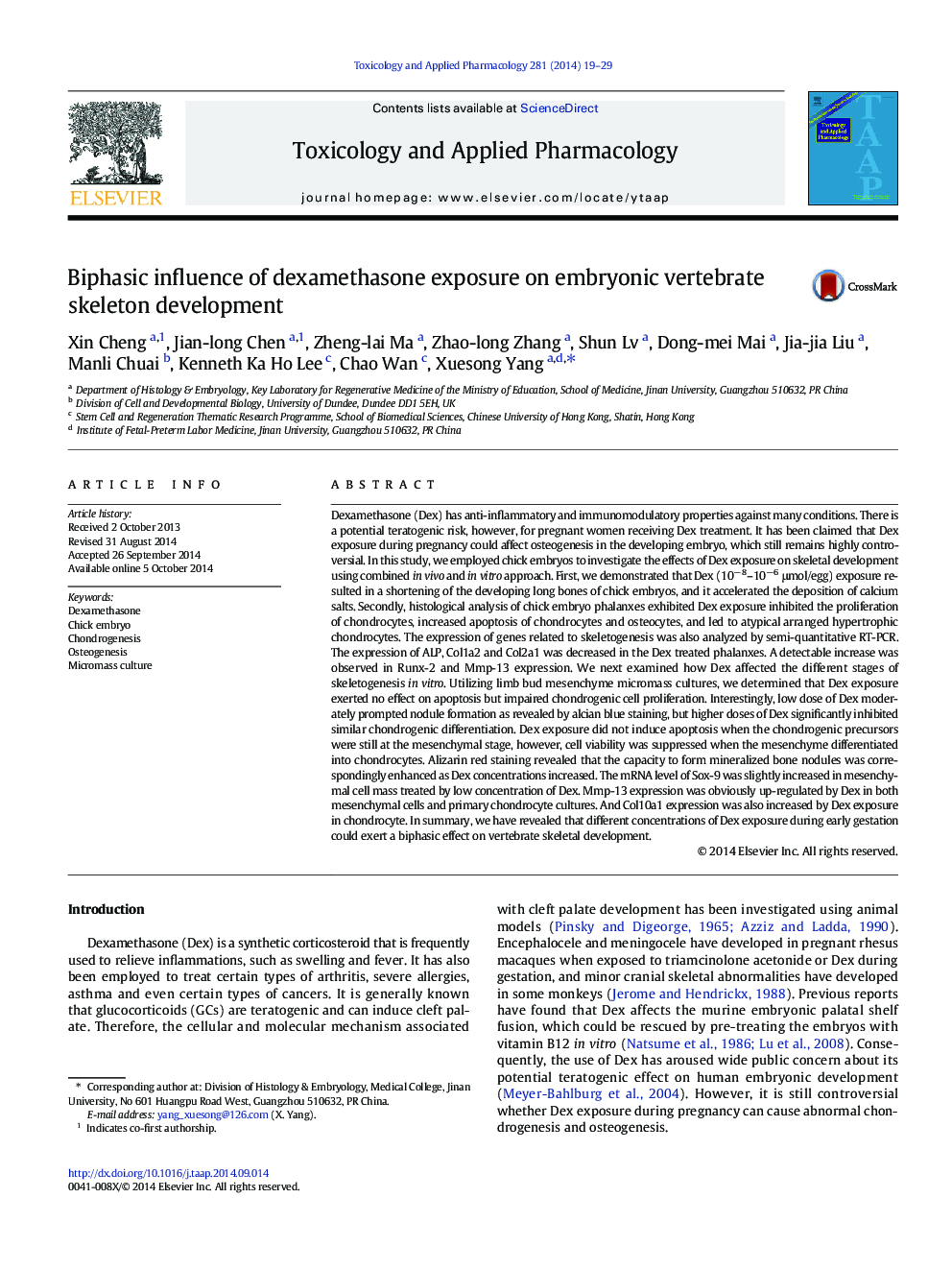| کد مقاله | کد نشریه | سال انتشار | مقاله انگلیسی | نسخه تمام متن |
|---|---|---|---|---|
| 2568468 | 1128458 | 2014 | 11 صفحه PDF | دانلود رایگان |
• Chick embryos occurred shortening of the long bone following Dex exposure.
• Dex suppressed chondrocytes proliferation and promoted apoptosis.
• Dex exposure decreased ALP production and up-regulated Runx-2 and Mmp-13.
• Dex exhibited biphasic effects on chondrogenic proliferation and nodule formation.
• The hypertrophy and ossification were accelerated by Dex both in vivo and in vitro.
Dexamethasone (Dex) has anti-inflammatory and immunomodulatory properties against many conditions. There is a potential teratogenic risk, however, for pregnant women receiving Dex treatment. It has been claimed that Dex exposure during pregnancy could affect osteogenesis in the developing embryo, which still remains highly controversial. In this study, we employed chick embryos to investigate the effects of Dex exposure on skeletal development using combined in vivo and in vitro approach. First, we demonstrated that Dex (10− 8–10− 6 μmol/egg) exposure resulted in a shortening of the developing long bones of chick embryos, and it accelerated the deposition of calcium salts. Secondly, histological analysis of chick embryo phalanxes exhibited Dex exposure inhibited the proliferation of chondrocytes, increased apoptosis of chondrocytes and osteocytes, and led to atypical arranged hypertrophic chondrocytes. The expression of genes related to skeletogenesis was also analyzed by semi-quantitative RT-PCR. The expression of ALP, Col1a2 and Col2a1 was decreased in the Dex treated phalanxes. A detectable increase was observed in Runx-2 and Mmp-13 expression. We next examined how Dex affected the different stages of skeletogenesis in vitro. Utilizing limb bud mesenchyme micromass cultures, we determined that Dex exposure exerted no effect on apoptosis but impaired chondrogenic cell proliferation. Interestingly, low dose of Dex moderately prompted nodule formation as revealed by alcian blue staining, but higher doses of Dex significantly inhibited similar chondrogenic differentiation. Dex exposure did not induce apoptosis when the chondrogenic precursors were still at the mesenchymal stage, however, cell viability was suppressed when the mesenchyme differentiated into chondrocytes. Alizarin red staining revealed that the capacity to form mineralized bone nodules was correspondingly enhanced as Dex concentrations increased. The mRNA level of Sox-9 was slightly increased in mesenchymal cell mass treated by low concentration of Dex. Mmp-13 expression was obviously up-regulated by Dex in both mesenchymal cells and primary chondrocyte cultures. And Col10a1 expression was also increased by Dex exposure in chondrocyte. In summary, we have revealed that different concentrations of Dex exposure during early gestation could exert a biphasic effect on vertebrate skeletal development.
Journal: Toxicology and Applied Pharmacology - Volume 281, Issue 1, 15 November 2014, Pages 19–29
